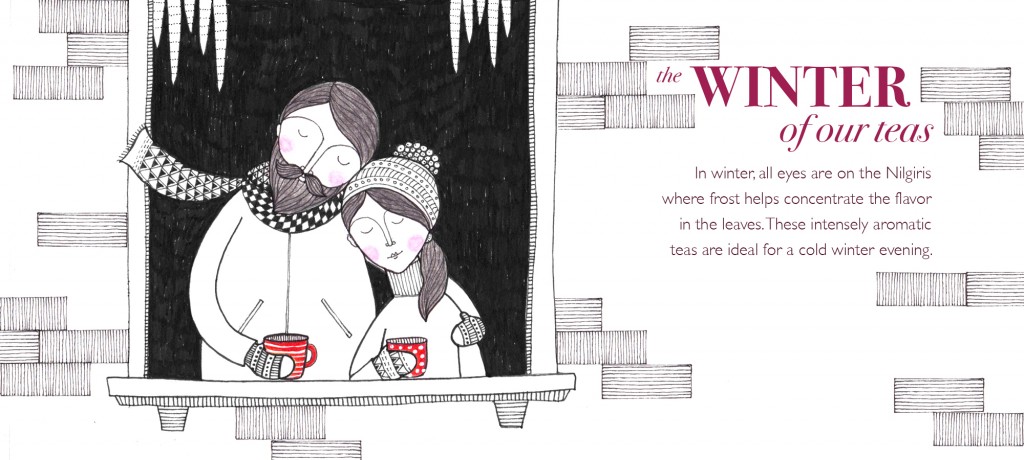In winter, all eyes are on the green ridges of the Nilgiris. The locals know that the season has begun when the temperature drops a few notches and the days are colder, when the annual visitors – the Kashmir flycatcher, the wagtails and warblers, and the droves of tourists from the plains make their presence felt. Being lower south, the ranges occupy a unique tropical-subtropical condition. Temperatures easily cross the dew point score.
The specialty of winter in the Blue Mountains (as Nil giris translate as) are the wintery frost. And its this frost that aids the growth of the regions best Nilgiris Frost Teas.
What happens to the plants, here in winter, is that the temperature drops but not so much as to make the plants dormant. Instead, frost settles on plants, slowing down their growth, allowing the flavours to develop gradually.
Frost teas are known for their heady floral and spicy aromatics, likely from the flora around here – notably jasmine and eucalyptus. Whats also impressive about Nilgiri teas is that they don’t develop the cloudiness one would normally find in a cold tea, which makes them perfect for ice tea blends.
And if you are wondering about tea from the other regions, winters in Darjeeling, Assam and Kangra are harsh and the plantations undergo hibernation until its spring again. No harvest takes place until spring.
Illustration by Handmade by Radhika
